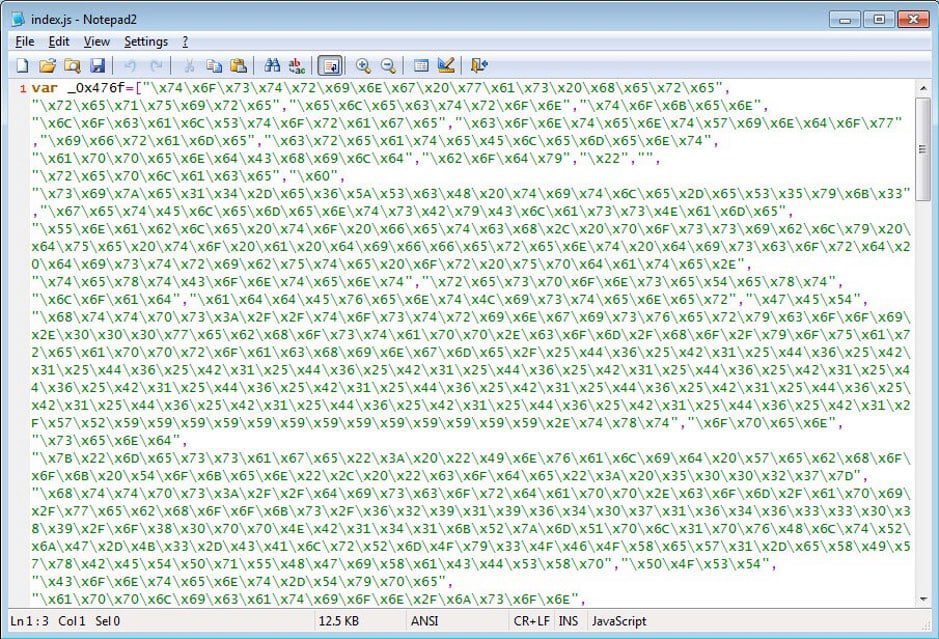A new malware backdoor steals information: A new type of malware is targeting Discord users by modifying the Windows Discord client to turn it into a backdoor and information-stealing Trojan.
Summary
The Windows Discord client is an Electron application, which means that almost all of its functionality is derived from HTML, CSS and JavaScript. "This allows the 'malware' to modify its core files so that the client performs malicious behaviour on startup.
Discovered by the researcher Malware Hunter Team Earlier this month, a malware backdoor was named "Spidey Bot", based on the name of the Discord command and control channel the 'malware' communicated with. Interestingly, there is a comment in the article below which states that its real name is "BlueFace".
Malicious JavaScript
Once installed, the malware adds its own malicious JavaScript to the files % AppData% \ Discord \ [version] \ modules \ discord_modules \ index.js and % AppData% \ Discord \ [version] \ modules \ discord_desktop_core \ index.js .

The backdoor malware will shut down and restart the Discord app to execute the new JavaScript changes.
Once launched, the JavaScript will execute various Discord API commands and JavaScript functions to gather a variety of information about the user, which will be sent to the attacker via a Discord webhook.
New malware: information collected
The information collected and sent to the attacker includes:
- Disagree User Token
- Victim's time zone
- Screen resolution
- Victim's local IP address
- Victim's public IP address via WebRTC
- User information such as username, email address, phone number and more
- If they have stored payment information
- Zoom factor
- Browser User Agent
- Discord version
- The first 50 characters of the victim's Windows clipboard
The contents of the clipboard are of particular concern, as they can allow the user to steal passwords, personal information or other confidential data copied by the user.
The Gightdio feature
The Gightdio function, which acts as a backdoor into new malware
After the information is sent, the Discord malware will execute the fightdio () function, which acts as a backdoor.
This function will connect to a remote website to receive an extra command to execute. This allows the attacker to perform other malicious activities such as stealing payment information if any, running commands on the computer, or potentially installing other 'malware'.
At the moment, the above site is inactive, but it is not known whether a different sample uses a different site or not. Also, a commenter below claims that the 'malware' has been discontinued, but we have no way to confirm this.
Discord messages
Researcher and reverse engineer Vitali Kremez, who also analyzed the malware, told BleepingComputer that the infection was seen using file names such as "Blueface Reward Claimer.exe" and "Synapse X.exe." While he is not 100% sure how it is being spread, Kremez feels that the attacker is using Discord messages to spread the malware.
Since this infection shows no external indication that it has been compromised, a user has no idea that he is infected unless he runs a network detection and sees the unusual API and 'web' hook calls.
If the installer is detected and removed, the modified Discord files will still remain infected and will continue to run every time you start the client. The only way to clean the infection will be to uninstall the Discord application and reinstall it so that the modified files are removed.
Even worse, after more than two weeks, this Discord malware still has only 24/65 detections on VirusTotal.
How to check if you have been infected by new malware
Checking whether your Discord client has been modified is very easy, since the target files usually have only one line of code.
To check the % AppData% \ Discord \ [version] \ modules \ discord_modules \ index.js, just open it in Notepad and it should only contain the single line of "module.exports = require ('./ discord_modules.node'); " as shown below.
For the file % AppData% \ Discord \ [version] \ modules \ discord_desktop_core \ index.js , it should contain only the "module.exports = require ('./ core.asar');" as shown below.
If one of the two files contains other code than that shown above, uninstall and reinstall the Discord client and confirm that the modifications have been removed.
It is important to remember, however, that other malware can easily modify other JavaScript files used by the Discord client, so these instructions are only for that specific malware.
How Discord can protect
How Discord can protect you against malware threats
After this article was published, we received many questions about how Discord can alert users to client modifications.
Discord can do this by creating a hash for each client file when a new version is released. After installation, if the file is modified, this hash will change.
When the Discord client is started, it can perform a file integrity check and verify that the hashes of the current file match the Discord client's default hashes. If they are different, that file has been modified and the application can display a warning, like the mockup we created below, that allows the user to continue loading the client or cancel it.
This check should be done using native code rather than another JavaScript file, which can be easily modified.
Update 10/24/19: Added sections on checking if specified JS files have been modified and how Discord can monitor these types of modifications.
Update 10/24/19 5:25PM EST: Added information about the C2 being dead, that the real name for this infection may be BlueFace, and that the malware is said to be discontinued.
Source: //www.bleepingcomputer.com






